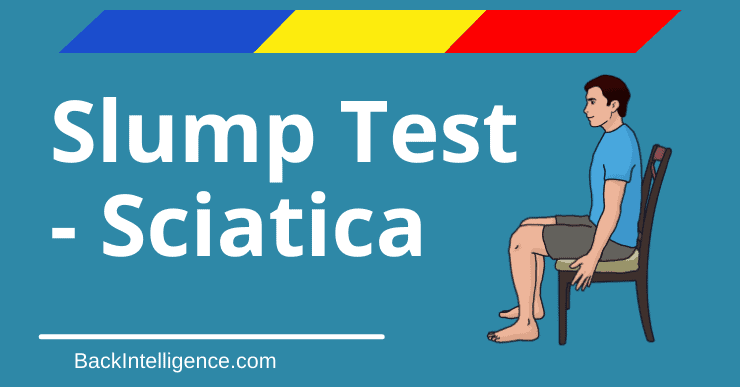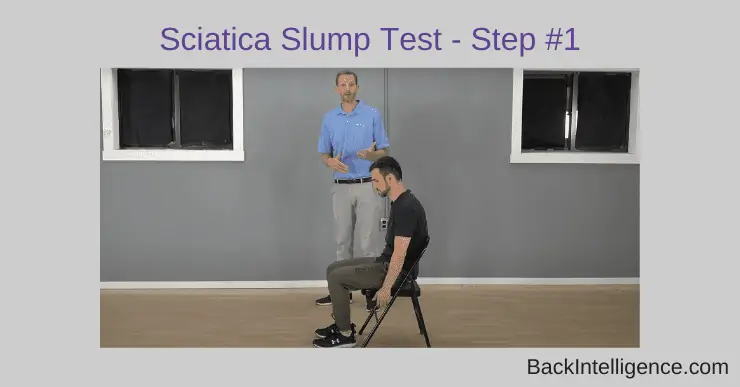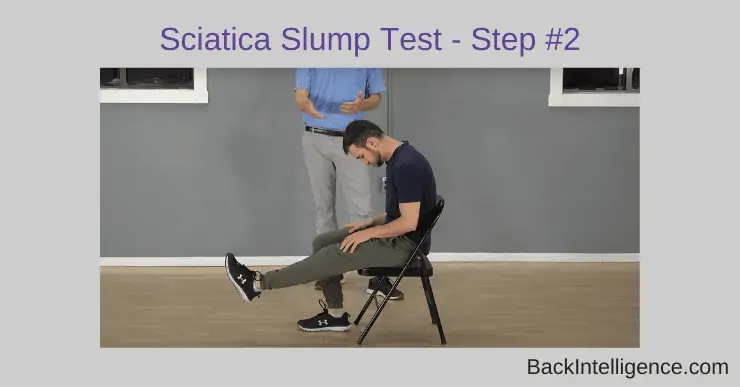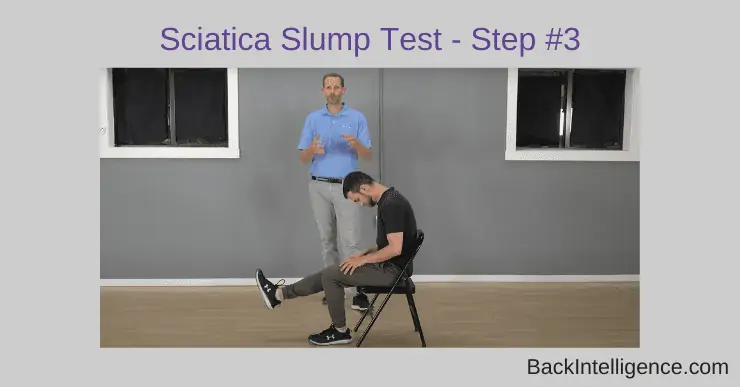
In this video, Dr. Oliver explains how to use the slump test to figure out if the symptoms you currently have are from Sciatica or not.
The Slump Test for Sciatica is actually a really simple test. Essentially, what we’re looking to see is if the symptoms that are going down your leg are caused by Sciatica or something else.
Most times sciatica affects only one leg (unilaterally), but it can affect both legs, depending on the cause.
In order to determine if your pain is true Sciatica or some other low back issue, we need to stress the nerve a bit to see if it reproduces your symptoms. You want to be careful with these types of tests. Go into them very slowly and back out of them slowly as well. Never power through a test like this or force anything. We’re just trying to see if it reproduces your symptoms.
The nerve exits your lower back, goes down your leg, and innervates your lower leg. So, we’re going to tension that nerve and see if there’s any entrapment or impingement along the way that’s causing these nerve type symptoms that you’re getting in your leg.
How to do the Slump Test for Sciatica
Step 1:
Sit on any type of chair you have. Slightly round out your lower back and tilt your pelvis in (posterior), which may right away cause some discomfort. If this alone reproduces your pain symptoms, you’re done with the slump test. If not, continue to the next step.
Step 2:
Next, start with your good leg, that you aren’t experiencing pain in. Straighten it out in front of you. And then again, round out your back and bring your head a little bit closer to your knee. Does it reproduce any symptoms? You probably won’t because this is the good leg, but you may get some back tension or some other symptoms.
Step 3:
Straighten out the opposite (bad) leg and bring your head down towards your knee again.
If you do feel your pain symptoms, it’s because you’re causing nerve impingement in some way, and you likely have sciatica.
If you don’t feel Pain travelling down your leg/foot, and you just get low back pain, that can mean you don’t have Sciatica, but may have a different low back issue.
If your test is positive, take a look at some of the articles with videos for sciatica we’ve linked below. They will help you get started on the path to improving your sciatica pain.
Related:
5 Sciatica Exercises For Pain Relief (With Pictures)
True Sciatica VS Piriformis Syndrome
How Long Does Sciatica Last? What Research says
7 Stretches for Lower Back Pain
Lower Back Pain When Sitting? Causes & Treatment Options
Dr. Oliver has been practicing in Massachusetts since 2007. He is a graduate of Marist College where he received a Pre-Med Bachelor of Science degree in Biology. Dr. Oliver then went on to pursue his chiropractic career by attending Palmer College of Chiropractic West, where he graduated Cum Laude. Dr. Oliver has his diploma in rehabilitation, which allows him to combine rehab and corrective exercise with traditional chiropractic treatment. This gives his patients better long term results.




